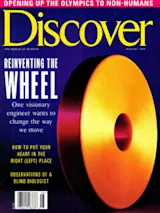Deprived of our blood-forming stem cells, we would all quickly die. These bone-marrow cells replenish red and white blood cells day in and day out for decades. The skin, liver, gut, and perhaps other organs are also thought to have their own stem cells that replace injured and dead cells. Not so the brain: The conventional wisdom has long been that it doesn’t have stem cells--perhaps in part because it would have a hard time holding on to memories if its cells were constantly being replaced. Instead the brain starts out with more cells than it ordinarily needs in a lifetime. Nature gives you too many brain cells to start with and assumes that you won’t do anything silly like get into a boxing ring or ride a motorcycle without a helmet, says Samuel Weiss, a neuroscientist at the University of Calgary in Canada. And in most cases nature has ...
Brain, Heal Thyself
Explore the potential of brain stem cells in repairing brain damage and their implications for diseases like Huntington's disease.
More on Discover
Stay Curious
SubscribeTo The Magazine
Save up to 40% off the cover price when you subscribe to Discover magazine.
Subscribe













